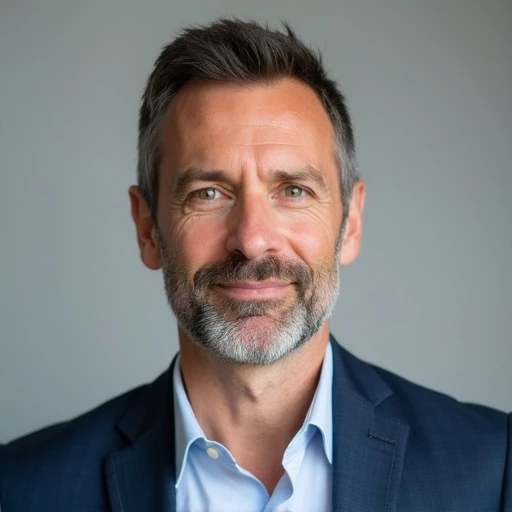The United States public school system is experiencing a significant and sustained drop in student enrollment, with more than one million students leaving in just four years. This trend, the sharpest decline in decades, is driven by a combination of parental concerns, demographic shifts, and a growing movement toward alternative education models like homeschooling.
Key Takeaways
- Public school enrollment in the U.S. has fallen by over one million students between 2019 and 2023.
- Factors contributing to the decline include dissatisfaction with curriculum, the COVID-19 pandemic's impact, and falling birth rates.
- Homeschooling has emerged as a popular alternative, offering families more control and flexibility over their children's education.
- The enrollment drop leads to significant funding cuts for public schools, creating challenges like teacher shortages and program reductions.
- Experts worry this shift could deepen educational inequality and affect the role of public schools in fostering a shared civic identity.
An Unprecedented Drop in Student Numbers
Across the country, public schools are grappling with a notable decrease in student population. Between 2019 and 2023, enrollment numbers fell in 41 states. This decline, which began as a temporary issue during the COVID-19 pandemic, has proven to be a lasting trend.
Government projections suggest this is not a short-term problem. By 2031, a further 7.6% drop is anticipated, which would remove nearly four million more children from the public system. This exodus also removes the taxpayer funding allocated per student, placing immense financial pressure on districts.
By the Numbers
- 1 million+ students have left public schools in four years.
- 41 states reported enrollment drops between 2019 and 2023.
- 325,000 students left California's public schools, the largest raw number decline in the nation.
- 4% is the average enrollment loss for urban school districts.
While falling birth rates and the migration of families from expensive urban centers account for part of this shift, they don't tell the whole story. Thomas Dee, a professor at Stanford University who studies this trend, estimates that demographic changes are responsible for about half of the enrollment decline. The other half is driven by active choices parents are making.
The Rise of Homeschooling and Alternative Education
Many families are opting out of the traditional school system in favor of homeschooling. Parents cite a range of reasons, from frustration with rigid curricula and social pressures like bullying to disagreements over what is being taught in the classroom.
Erin Laughlin, a parent in Brentwood, California, chose to homeschool her seven-year-old daughter, Scarlett. She described the shift as a "movement." Scarlett's education now combines short formal lessons at home with hands-on learning at a local farm and social time with friends.
"Homeschooling parents realise how much better their children are doing without the pressure of public school," Mrs. Laughlin said.
The desire for a more adaptable learning environment is a key motivator, especially for parents of children with unique needs. Katrina O’Neil, a cybersecurity expert from Palo Alto, withdrew her neurodivergent son from public school after he became anxious and disruptive. She felt the system focused only on his challenges.
"His gifts weren’t appreciated. Only his deficits were paid attention to," she explained. After a year of self-directed study, he was auditing university-level astronomy lectures at the age of nine. Ms. O'Neil credits homeschooling with restoring his confidence and love for learning.
Concerns Over Lack of Oversight
While stories of success fuel the homeschooling trend, critics raise concerns about the lack of regulation. Rules vary significantly by state. In 11 states, including Texas and Michigan, parents can begin homeschooling without notifying authorities and are not required to submit attendance records or conduct academic testing.
Dr. Dennis Willingham, a public school superintendent in Walker County, Alabama, highlighted the potential risks. "There is zero accountability in terms of attendance, testing, curriculum and ideology. We don’t know what is happening in the home," he stated.
Homeschooling and Higher Education
The long-term impact of homeschooling on academic and career outcomes is still being studied. A 2021 Harvard analysis of survey data from over 12,000 children found that homeschooled students were 23% less likely to attend college than their public school counterparts. Researchers suggest this could be due to varied academic preparation, different life goals, or potential biases in college admissions.
The Downward Spiral for Public Schools
Fewer students directly translate to less funding, creating a difficult cycle for public schools. Reduced budgets force districts to make cuts, which can further erode parental confidence in the system. This financial strain is compounded by a severe teacher shortage.
In the last academic year, more than 70% of public schools reported struggling to fill at least one teaching position. The most difficult roles to staff are in math, science, and special education. This often leads to larger class sizes, fewer specialized courses, and the hiring of underqualified instructors.
The political landscape adds another layer of complexity. "School choice" policies, which allow public funds to be used for private or homeschooling, are gaining traction. Supporters say these policies empower parents, but opponents argue they drain critical resources from an already struggling public system.
Broader Implications for Society
The decline of public education has consequences that extend beyond school walls. For generations, public schools have been seen as a cornerstone of American democracy—a place where children from diverse backgrounds learn together and forge a common identity.
Academic performance is also a concern. The U.S. is falling behind internationally, ranking 26th out of 37 developed nations in math, according to the latest OECD assessment of 15-year-olds. National data is also troubling, with recent assessments showing that over 30% of high school graduates lack basic reading skills.
"Better education not only implies higher levels of employment and higher earnings, it also stimulates innovation, improves health outcomes and improves civic engagement," said Professor Dee of Stanford University.
Experts like Neil Postman have long argued that public schools do more than just educate; they create a public. As more families choose separate educational paths, some researchers worry about increasing social fragmentation and inequality.
Kristine A. Gilmore of the School Superintendents Association noted the vital community role of schools. "School districts can be the common thread that pulls communities together," she said. The loss of this shared institution could limit social mobility and deepen existing divisions in society.
For parents like the Laughlins, however, the decision remains a personal one focused on their children's immediate well-being. "They’re not worried about brands or bullying. They’re just happy," said Mrs. Laughlin. "That’s worth everything.”





